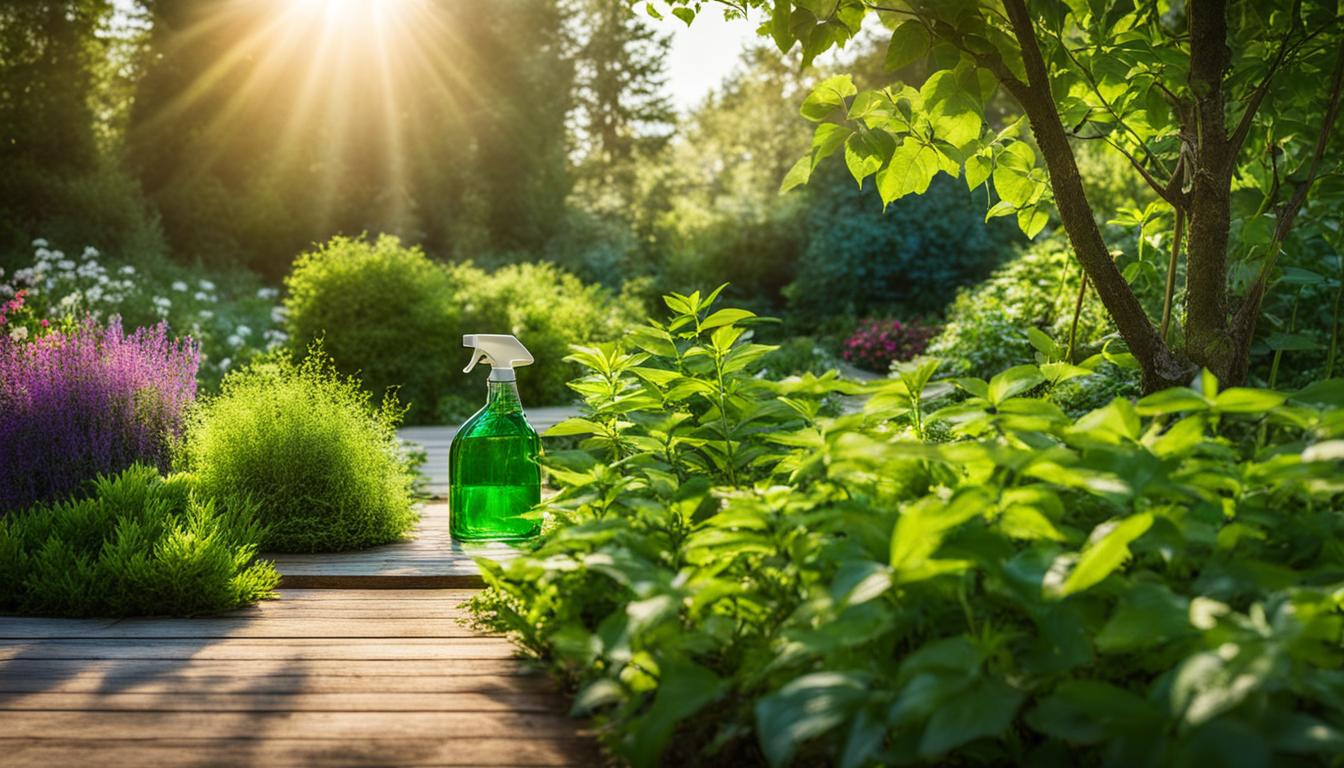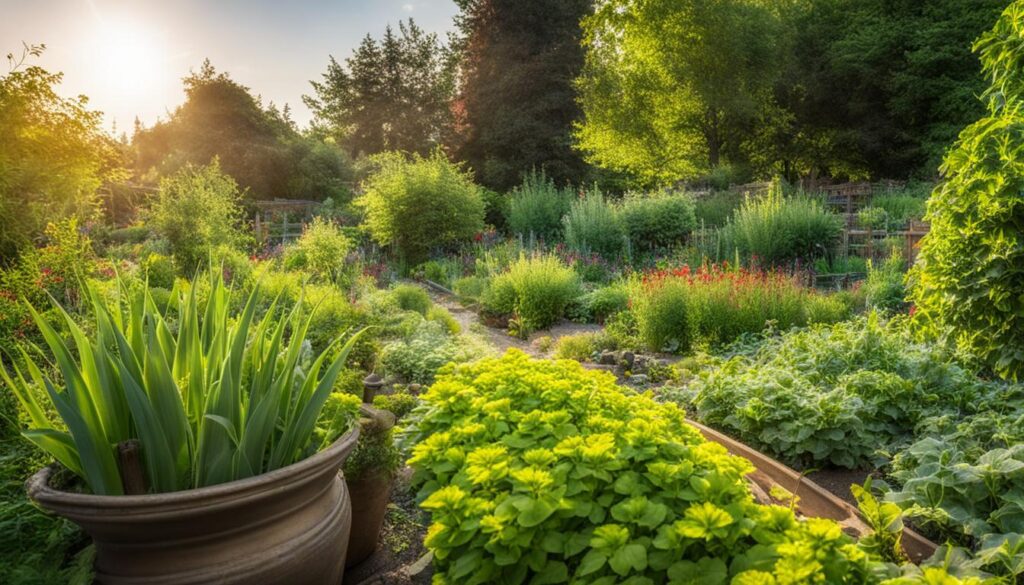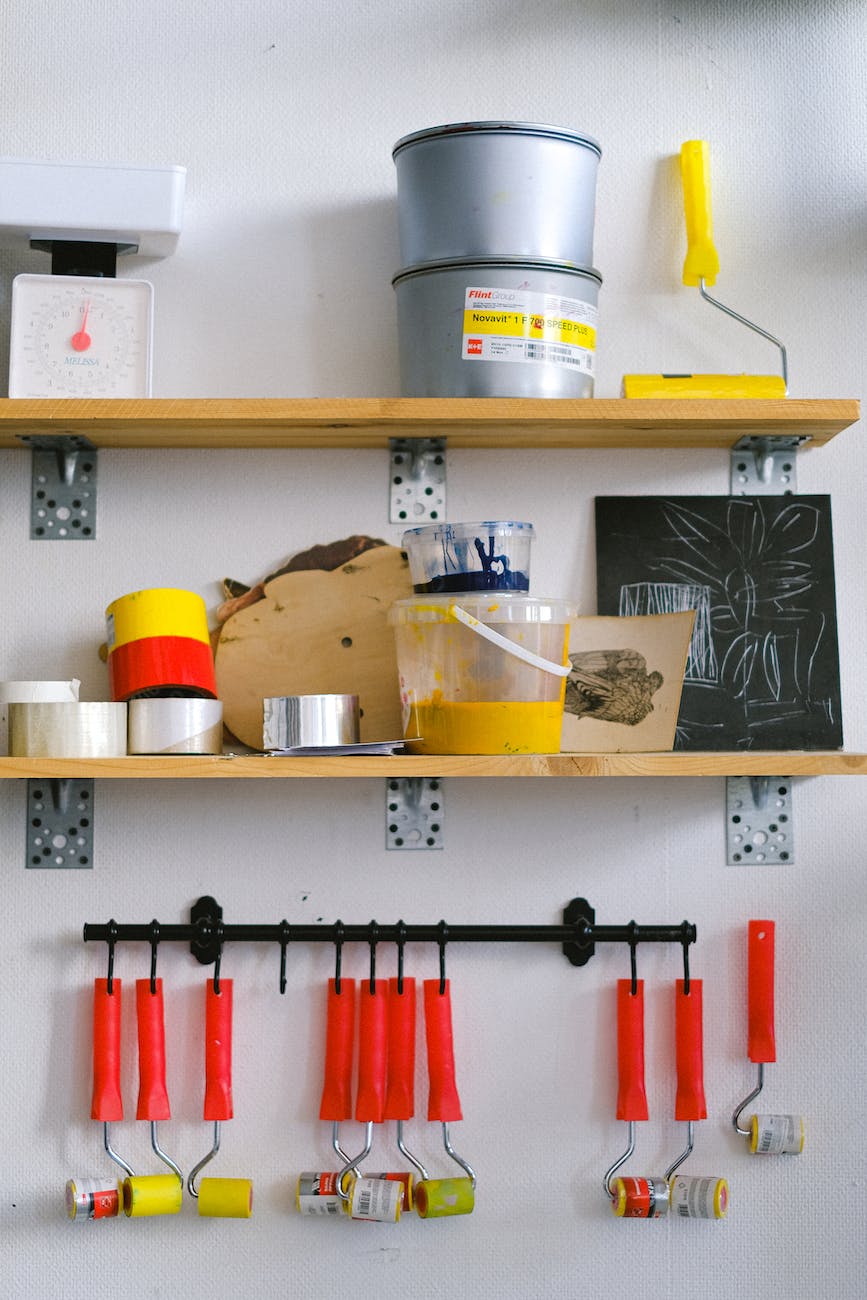Beginners Guides
Eco-Friendly Natural Weed Killer Solutions

Growing awareness of the negative effects of store-bought pesticides and herbicides has led to an increase in demand for eco-friendly weed control solutions. As conscious gardeners, we understand the importance of using non-toxic, natural weed killers to protect our precious environment. By opting for eco-friendly alternatives, we can effectively remove weeds without harming our health, the health of our beloved plants, or the well-being of our furry friends.
Traditional weed control methods often rely on harsh chemicals that not only pollute our soil and water sources but also pose risks to human health. Fortunately, there are now a variety of natural weed killers available that provide effective results while minimizing harm to the environment. These eco-friendly weed removers utilize plant-based ingredients and innovative techniques to control unwanted vegetation, giving us peace of mind as we maintain our gardens.
Key Takeaways:
- Natural weed killers offer a non-toxic alternative to store-bought pesticides and herbicides.
- Using organic weed control methods helps protect the environment and promotes sustainable gardening practices.
- Eco-friendly weed removers are effective and safe for humans, pets, and beneficial insects.
- By embracing non-toxic weed control, we can maintain a healthy garden without compromising our well-being.
- Integrated pest management (IPM) combines various techniques to prevent and remove weeds while promoting overall soil health.
The Dangers of Commercial Weed Killers
Commercial weed killers, such as those containing glyphosate and 2,4-D, pose significant threats to the environment, human health, and animal well-being. These industrially made weed killers have been widely used for years due to their effectiveness in eliminating unwanted vegetation. However, the negative effects they have on our surroundings cannot be ignored.
In recent years, there has been a growing awareness of the detrimental impact of these chemical-based weed killers on the environment. Studies have shown that the active ingredients in these products can persist in soil and water, leading to long-term contamination. The toxic residues can find their way into rivers, lakes, and groundwater, threatening aquatic life and disrupting ecosystems.
Besides their impact on the environment, the use of commercial weed killers raises concerns about human health. Exposure to these chemicals has been linked to various health issues, including respiratory problems, skin irritations, and even certain types of cancer. It’s essential to prioritize our well-being and explore safer alternatives for weed control.
To address these concerns, laws and regulations regarding pesticide use have evolved to mitigate the risks associated with these products. Many countries have implemented restrictions and labeling requirements to ensure safer practices. However, the focus has primarily been on regulating insect-killing pesticides, and the regulation of plant-killing herbicides has been comparatively slower.
As public awareness grows and scientific research progresses, it is crucial to consider the negative effects of industrially made weed killers on our environment, health, and overall well-being. By exploring alternative approaches to weed control, we can adopt more sustainable practices and protect our surroundings for future generations.
“The use of commercial weed killers not only affects the environment but also poses risks to human and animal health.”
Organic Alternatives to Conventional Weed Control
When it comes to weed control, there is a growing demand for organic alternatives that are effective and environmentally friendly. Fortunately, the market now offers a wide range of options for those who wish to steer clear of chemical-based herbicides. These organic herbicides, derived from natural sources such as clove oil and vinegar, provide safe and non-toxic solutions for weed control.
One of the key advantages of organic herbicides is their non-selective nature. Unlike conventional herbicides, which selectively target specific types of weeds, organic alternatives are designed to kill all plants they come into contact with, including unwanted grasses. This makes them particularly useful for areas where complete vegetation removal is desired.
Another organic alternative worth considering is corn gluten meal. While primarily known for its use as a protein supplement in livestock feed, corn gluten meal can also be used as a pre-emergent herbicide for crabgrass prevention. It inhibits the germination of weed seeds, preventing them from taking root and growing into thriving plants. However, it’s important to note that corn gluten meal may not be cost-effective for large areas and is more commonly used in smaller garden settings.
A Comparison of Organic Weed Control Alternatives
| Organic Herbicide | Advantages | Disadvantages |
|---|---|---|
| Clove oil | Effective against a wide range of weeds Non-toxic to humans and pets |
May require multiple applications Can be more expensive than chemical herbicides |
| Vinegar | Rapidly kills weeds on contact Safe for the environment |
May damage desirable plants if not applied carefully Requires frequent re-application |
| Corn gluten meal | Prevents crabgrass and other weeds from germinating Slow-release nitrogen fertilizer |
Not cost-effective for large areas May attract birds and rodents when used in excess |
Incorporating organic alternatives into your weed control strategy not only helps to protect the environment but also promotes sustainable gardening practices. These non-toxic options provide peace of mind, knowing that your efforts to maintain a healthy lawn and garden aren’t compromising the well-being of your loved ones or local ecosystems.
Homemade Weed Killer Recipes
Looking for natural alternatives to store-bought chemicals for weed control? Homemade weed killer recipes have been passed down through generations, providing effective options that are kinder to the environment. Let’s explore some popular homemade weed killer recipes:
Vinegar Weed Killer
A common recipe for vinegar weed killer involves combining vinegar, salt, and soap. Vinegar acts as a natural herbicide, while salt helps to desiccate the plant tissues. The addition of soap helps the mixture adhere to the plant surface. When combined, these ingredients work together to disrupt plant cells and effectively control weeds. However, caution should be exercised when using vinegar weed killer, as it can also harm desirable plants and grass.
Ultra Dawn Dish Soap as a Moss Killer
If you’re dealing with moss growth in your garden, Ultra Dawn dish soap can be a useful tool. Mix a small amount of Ultra Dawn dish soap with water and apply it directly to the moss. The soap helps to break down the moss, making it easier to remove. Remember to apply this mixture carefully, targeting only the moss to avoid damaging surrounding plants.
Borax for Controlling Creeping Charlie
Creeping Charlie, also known as ground ivy, can quickly take over your lawn if left unchecked. Borax can be an effective remedy for controlling creeping Charlie. Mix borax with water and apply it to the affected areas. The borax disrupts the plant’s growth and ultimately helps control its spread. However, it’s important to note that borax can have a lasting impact on the soil, so it should be used sparingly and with caution.
When using homemade weed killer recipes, it’s crucial to follow the application instructions and consider the potential impact on neighboring plants. While these recipes offer natural alternatives, it’s essential to use them judiciously to maintain the health of your garden.
Mechanical Means of Weed Removal
Mechanical means of weed removal offer effective methods for controlling weeds in your garden. These methods involve using tools or techniques that physically eliminate weeds from the soil, without relying on chemical-based solutions. Let’s explore three common mechanical methods: flame torch, boiling water, and hand removal.
Flame Torch
A flame torch is a tool that uses intense heat to scorch and kill weeds. It works by directing a flame at the base of the weed, causing thermal shock and damaging the plant’s tissues. This method is particularly useful for controlling weeds in paved or non-planted areas, as the high heat can quickly eliminate unwanted vegetation.
To use a flame torch effectively, follow these steps:
- Ensure safety by wearing protective clothing, such as gloves and goggles.
- Hold the flame torch a few inches above the weed’s base and gradually move it along the plant’s surface.
- Focus the flame on the weed for a few seconds until you see it wilt or change color.
- Repeat the process for all targeted weeds, ensuring that you thoroughly treat each one.

Boiling Water
Boiling water can be a simple and cost-effective method for killing weeds. This technique takes advantage of the high temperature to scald and destroy the plant cells, effectively eliminating the weed. Boiling water is particularly useful for weeds growing in cracks on pavements or between bricks.
To use boiling water as a weed killer:
- Boil a pot of water on your stovetop or using a kettle.
- Carefully carry the boiling water to the targeted weeds.
- Pour the boiling water directly onto the weeds, ensuring that the water covers the entire plant.
- Repeat the process for any remaining weeds.
Hand Removal
Hand removal is a labor-intensive but highly effective method for controlling weeds, especially in small garden areas or vegetable patches. This method involves physically pulling the weeds out of the ground, ensuring that you remove the entire plant, including the roots. By removing the roots, you prevent the weed from regrowing.
Here’s how to perform hand removal effectively:
- Put on gardening gloves to protect your hands.
- Get close to the weed and grasp it firmly at the base, where it meets the soil.
- Slowly and firmly pull the weed upward, ensuring that you remove the roots along with the plant.
- Discard the pulled weeds away from your garden to prevent reseeding.
Using mechanical means of weed removal, such as a flame torch, boiling water, or hand removal, can help you maintain a weed-free garden without relying on chemical-based herbicides. Choose the method that suits your needs and preferences, and combine it with other weed control strategies for optimal results.
The Effectiveness of Organic Weed Killers
When it comes to weed control, organic options have gained popularity among gardeners and homeowners seeking eco-friendly solutions. Organic weed killers offer peace of mind, knowing that they won’t harm the environment, human health, or animal health. However, it’s important to understand that organic weed killers may not be as effective as their chemical-based counterparts.
While chemical weed killers often provide quick and visible results, organic weed killers may require more careful and targeted application. This reduced effectiveness can be attributed to the absence of potent synthetic chemicals that are found in conventional herbicides. Instead, organic weed killers rely on natural ingredients and mechanisms to control weeds.
Although organic weed killers may not deliver instant results, they are a sustainable alternative that favors long-term environmental health. By embracing organic weed control options, we can contribute to a healthier ecosystem and promote sustainable gardening practices. With ongoing research and advancements in organic science, we may see the development of more effective organic weed killers in the future.
| Pros of Organic Weed Killers | Cons of Organic Weed Killers |
|---|---|
| Safe for the environment | Reduced effectiveness compared to chemical-based herbicides |
| Non-toxic to humans and animals | Requires careful and targeted application |
| Promotes sustainable gardening practices | May not deliver instant results |
Top 10 Organic Weed Killers
When it comes to organic weed control, there are several effective options available in the market. These eco-friendly weed killers offer a safe alternative to chemical-based herbicides, ensuring a healthy environment for your plants, pets, and family. Here are the top 10 organic weed killers:
- Green Gobbler 20% Vinegar Weed Killer: This powerful weed killer is made from 20% vinegar, making it effective in killing weeds, including their roots. It is biodegradable and safe for humans and pets.
- Sunday Weed Warrior: Sunday Weed Warrior is a non-selective herbicide that uses the power of iron to kill weeds. It provides visible results within 24 hours and is pet-friendly.
- NATRIA Grass and Weed Control: NATRIA Grass and Weed Control is a natural herbicide that contains essential oils and other organic ingredients. It effectively controls both grassy and broadleaf weeds.
- OrganicMatters Natural Weed Killer: This organic weed killer is made from concentrated vinegar and citrus oil, making it a potent solution for weed control.
- Safer Brand Fast-Acting Weed and Grass Killer: Safer Brand’s weed and grass killer is an effective organic solution that provides results within hours. It is rainproof once dry and safe for use around pets and children.
- BioAdvanced Organic Weed Killer: BioAdvanced’s organic weed killer is made from natural fatty acids and kills weeds within hours. It is safe for use around pets and children.
- Green Earth Weed & Grass Killer: This organic weed killer is made from all-natural ingredients, providing a safe and effective solution for weed control.
- Bonide Burnout Weed and Grass Killer: Bonide Burnout is a fast-acting weed and grass killer made from natural ingredients. It is rainproof within 2 hours and safe for use around children and pets.
- Preen Organic Vegetable Garden Weed Preventer: Preen Organic Weed Preventer is a selective pre-emergent herbicide that prevents weeds from emerging in your vegetable garden. It is safe to use around edible plants.
- Avenger Organics Weed Killer: Avenger Organics Weed Killer is a non-selective herbicide made from citrus oil. It provides visible results within hours and is safe for use around pets and children.
These organic weed killers offer an effective and safe way to control weeds in your garden. Choose the one that best suits your needs and enjoy a weed-free and eco-friendly landscape.
Eco-Friendly Homemade Weed Killer Recipe
If you’re looking for an eco-friendly solution to tackle those stubborn weeds, we’ve got you covered. Our homemade weed killer recipe is easy to make and uses natural ingredients that are safe for the environment and your garden. Let’s dive into the details:
- Start with vinegar, the star ingredient of this recipe. Make sure you use a higher concentration vinegar than regular household vinegar for maximum effectiveness. Vinegar is a natural herbicide that removes weeds by disrupting their cellular structure.
- Add orange oil concentrate to the mixture. Not only does it act as a surfactant, helping the weed killer solution to stick to the plant, but it also possesses insecticidal properties.
- Lastly, include Dr. Bronner’s Peppermint Castile Soap. This soap aids in the adhesion of the solution to the weeds, ensuring it stays in place for longer.
Now that you have your homemade weed killer recipe ready, it’s time to put it to use. On a dry and sunny day, apply the solution directly to the weeds, ensuring thorough coverage. Be cautious not to spray it on desirable plants or grass, as it may harm them as well.
Remember, while homemade weed killers are effective and environmentally friendly, it’s essential to handle them with care and follow the application instructions. By choosing this eco-friendly option, you can remove weeds while making a positive impact on the environment.
Conclusion
Embracing eco-friendly weed control solutions is a smart choice for maintaining a healthy and thriving garden. By opting for non-toxic weed removal methods, we can effectively eliminate weeds while prioritizing the well-being of our plants, beloved pets, and family members.
Organic weed killers provide a safe and environmentally friendly alternative to store-bought pesticides. They not only help preserve the health of the ecosystem, but also promote sustainable gardening practices. By utilizing these eco-friendly options, we can contribute to a cleaner and greener environment for generations to come.
When implementing weed control methods, it is crucial to follow application instructions and consider the potential impact on neighboring plants. Whether using organic herbicides, mechanical means, or homemade recipes, we must use them responsibly to minimize unintended consequences. By doing so, we can strike a balance between effective weed removal and the overall health of the garden ecosystem.
In summary, eco-friendly weed control is an integral part of sustainable gardening practices. By choosing non-toxic alternatives and employing mindful weed removal techniques, we can create a harmonious garden environment that thrives without compromising our values or the surrounding ecosystem. Let’s embrace eco-friendly weed control and enjoy a beautiful and healthy garden that benefits both us and the planet we call home. Yes, some natural weed killer solutions like vinegar and essential oils can also be used as efficient fruit fly traps. By placing these natural solutions in strategic locations, you can effectively control and eliminate fruit fly infestations without the use of harmful chemicals. Eco-friendly natural weed killer solutions include organic herbicides, non-toxic weed control methods, and homemade weed killer recipes using vinegar, salt, and soap or other natural ingredients. Commercial weed killers, often containing glyphosate and 2,4-D, can have negative effects on the environment, human health, and animal health. They are being questioned due to their potential harm and are subject to evolving laws and regulations regarding their use. Some organic alternatives to conventional weed control include organic herbicides made from plant-derived concentrates like clove oil and vinegar. Corn gluten meal can also be used as a pre-emergent herbicide for crabgrass prevention. Homemade weed killer recipes often include vinegar, salt, and soap to disrupt plant cells and desiccate tissue. Other recipes may include Ultra Dawn dish soap for moss control or a mixture of borax and water to control creeping Charlie. Mechanical means of weed removal include using a flame torch or boiling water to kill weeds by scorching or thermal shock. Hand removal is also an effective method, especially for perennial weeds, and can help aerate the lawn. Organic weed killers may not be as effective as chemical-based ones, but they provide peace of mind knowing that they are not harming the environment, human health, or animal health. Careful and targeted application is necessary to avoid widespread pollution. Some top organic weed killers in the market include Green Gobbler’s 20% Vinegar Weed Killer, Sunday Weed Warrior, and NATRIA Grass and Weed Control. These products are non-selective, biodegradable, safe for humans and pets, and provide visible results within 24 hours. An eco-friendly homemade weed killer recipe consists of vinegar, orange oil concentrate, and Dr. Bronner’s Peppermint Castile Soap. Vinegar acts as the main ingredient, while orange oil concentrate serves as a surfactant with insecticidal properties. The soap helps the mixture adhere to the plants. Eco-friendly weed control methods provide a safe and non-toxic way to effectively remove weeds and maintain a healthy garden. By using organic weed killers and sustainable gardening practices, you can contribute to a healthier environment and protect the well-being of your plants, pets, and family members.Can Natural Weed Killer Solutions Also Be Used for Fruit Fly Control?
FAQ
What are some eco-friendly natural weed killer solutions?
What are the dangers of commercial weed killers?
What are some organic alternatives to conventional weed control?
What are some homemade weed killer recipes?
What are some mechanical means of weed removal?
How effective are organic weed killers?
What are some top organic weed killers in the market?
What is an eco-friendly homemade weed killer recipe?
What are the benefits of eco-friendly weed control methods?
- About the Author
- Latest Posts
Meet Bethia, the visionary designer at ByRetreat who brings a touch of magic to every remote workspace she creates. With a boundless imagination and an eye for beauty, Bethia is passionate about transforming ordinary spaces into extraordinary havens of creativity and comfort.
Bethia possesses a unique talent for envisioning the perfect combination of furniture, colors, and textures that harmonize seamlessly in a room. She understands that selecting furniture goes beyond mere functionality; it’s about curating pieces that evoke a sense of style and sophistication while enhancing the overall ambiance.
Beginners Guides
Tips for Painting a Couch

Here are some crucial pointers, whether you are painting a sofa or altering its color. It is essential to utilize only high-quality paint. Paint composed of low-quality materials will not yield the same results and will likely crack once dried. For upholstery, it is recommended to use fabric paint for optimal results. This will provide a seamless finish without making the sofa feel stiff.

Chalk paint on a couch
Before applying chalk paint on a couch, it is important to prepare the surface. To remove paint, use Goo Gone and wash the surface with warm water. Dry the piece completely. Lightly sand any areas that are rough with 220 grit paper. The entire couch doesn’t have to be sanded.
After you have prepared the surface you can paint the couch. A spray bottle or a brush are the best tools for applying the paint. This will allow the paint to penetrate fabric fibers. Even after multiple coats, it will last for years. To reach into buttons and crevices, you can use a paintbrush. Between coats, let the fabric dry completely. To protect your couch, apply a clear wax.
Oil-based paint
If you are looking for a long-lasting finish, oil-based paint is the best choice. It adheres to most surfaces and leaves a rich, lacquer-like appearance. This is the best option for high-traffic areas like a couch. You can also get this type of paint in flat, satin, or glossy finishes.
Before you start painting, be sure to understand the differences between oil and water-based paints. Water-based paint won’t stick well to oil-based paintings. Use rubbing alcohol to test the paint’s adhesion. Dip a white cloth in rubbing alcohol, and rub the wall with it. Water-based paints will transfer to a clean cloth easily, while oil-based paints will not.
Use fabric paint
If you want to paint your couch using fabric paint, you will need some basic tools. To paint the upholstery with fabric paint, you will need a nylon paintbrush, a drop cloth and a paint container. To add durability and prevent the paint from peeling, you may use sealing wax. To ensure that the paint spreads evenly, you may want to dampen your fabric with plain water.
After you’ve painted your couch, allow it to dry completely before applying the second layer. You should wait no more than an hour between each coat to ensure the paint does not dry too quickly.
Sanding
These are some helpful tips for painting a couch. Preparing furniture for painting is as simple as sanding. This is essential as you will want to inspect the final product before you start. It is important that you see the finished piece before you start painting.
Sanding furniture is crucial to ensure paint adheres properly. This will ensure that your new coat of paint will adhere to the furniture with a smooth and even finish. The furniture can be sanded with either an orbital or hand sander, depending on its condition. You will need 150-grit Sandpaper for this step. You can also use sanding blocks to reach hard-to-reach places.
Use a tack cloth
You can make your own tackcloth if you don’t have enough money to purchase a professional painter’s cloth. The basic cloth should measure approximately twelve by twenty-four inches. It doesn’t matter what size you choose. Just soak it in water, then dry it. Fold it in multiple layers.
It is not difficult to choose a tackcloth, but it is essential to do your research. It is crucial to make sure that the tackcloth doesn’t leave wax residue after drying, and doesn’t bleed paint. Tack cloths are suitable for small projects but professionals might prefer them for larger surfaces.
Use milk paint to cover a couch
Milk paint is a great way to give your couch a distressed appearance. Milk paint, which is thinner than regular paint, leaves the wood grains visible. This allows you to layer and distress. This can be applied to a sofa or couch with ease.
The first coat may appear streaky. Apply another coat to even out the color. Remember that milk paint can be porous so it must be sealed. It’s easy and shouldn’t take too much time.
Oil-based paint for leather couches
Oil-based paints can stain leather couches. There are methods to clean it. First, you need to dissolve the oil in the paint with a special solvent. This should remove most of the stain. Hydrogen peroxide can also be used to remove stubborn stains.
It is harder to remove oil-based paint than water-based. It is important to remove all paint from your couch. It’s not difficult if you act quickly. Once the paint dries, it will be more difficult to remove. Most paint stains can be removed with olive oil and soap. If you have a stubborn stain you can use an edged tool.
- About the Author
- Latest Posts
Introducing Ron, the home decor aficionado at ByRetreat, whose passion for creating beautiful and inviting spaces is at the heart of his work. With his deep knowledge of home decor and his innate sense of style, Ron brings a wealth of expertise and a keen eye for detail to the ByRetreat team.
Ron’s love for home decor goes beyond aesthetics; he understands that our surroundings play a significant role in our overall well-being and productivity. With this in mind, Ron is dedicated to transforming remote workspaces into havens of comfort, functionality, and beauty.
Beginners Guides
Craft Paint Storage

You should maintain the quality of your craft paints by storing them in a designated paint storage unit. A rotating organizer like the Craft Smart Paint Storage Spinner is an ideal choice. These units assist in organizing your paints for easy access and help in keeping them dry, which is crucial for preserving their quality.
Plydolex Army Painter
The Plydolex Army Painting Rack is a great storage solution and can store a variety of art supplies. It can store up to 74 paint bottles and 14 paint brushes. The organizer’s solid wood construction makes it durable and will last for many years. The Plydolex army painting wooden paint storage rack is a better option if you need a permanent solution to your paint and art supplies.
The right size Plydolex army paint rack is crucial. There are many sizes available so that you don’t run out paint storage space. The large holes make it easy to store larger bottles of paint, while the smaller holes can hold smaller ones.
The corner Plydolex storage rack for paint has 18 large holes to hold larger paint bottles. You can also use the fourteen smaller holes to store dropper-style paint containers. The rack’s design makes it easy to find paints and keeps them organized.
Citadel army painter
Dropper bottles are a great option for those looking to store their Citadel army colors. Dropper bottles work better than pots, and they will keep your paints from leaking, especially if your cat likes to mess up whenever he can. This paint storage solution has another advantage: It is compact. The 5mm thick PVC is light, waterproof, anti-corrosion and water-resistant. Although it is an excellent storage solution, it may not be compatible with all paints.
The Citadel paint set includes 48 pots of paint in three ranges: Shade, Layer, and Base. A sturdy plastic box holds two racks of twenty-one paints each. The lid has a handy tray that makes it easy for you to pick up and place the paints after use.
Citadel provides a paint storage system that is suitable for army painters. Modular design of the paint station allows you to store 30 different paints. The kit also comes with 7 paint brushes and a water bottle. The package also contains a painting guide. It is important to note that Citadel paint storage units may not be the only option on the market.
Citadel army paints are available in many gaming shops around the world. However, messy paints can result from pouring the paint into the pot. The paints will dry quicker if this is done. This is not recommended to paint large buildings or vehicles. This can cause more mess and dry paints faster.
- About the Author
- Latest Posts
Introducing Charles, the Editor in Chief at ByRetreat, whose passion for interior design and editorial excellence elevates every remote workspace to new heights. With his keen eye for detail, impeccable taste, and expertise in design, Charles brings a wealth of knowledge and creativity to the ByRetreat team.
As the Editor in Chief of a renowned lifestyle blog, Charles has honed his skills in curating captivating content and staying up-to-date with the latest trends in interior design. His deep understanding of aesthetics and the power of storytelling through design enables him to create remote workspaces that are not only visually stunning but also rich in personality and meaning.
Beginners Guides
How to Distress Your Kitchen Cabinets With Chalk Paint

Chalk paint is the top option for achieving a distressed look on your kitchen cabinets. This environmentally-friendly, low VOC paint is simple to clean and can be applied with a sprayer or brush in a variety of colors.
You can distress your kitchen cabinets with chalk paint

You can distress your kitchen cabinets with Chalk Paint. This is a great method to update your kitchen decor. Chalk paint is a special type of flat paint that sticks to almost all surfaces. After the painting is complete, you’ll need to apply a protective coat. Varathane Water-based Top Coat Matte is an option to achieve a matte look.
Preparing your cabinets for painting is important. Wash them with soap and water before you start. If you find any areas that are not showing through, spot-priming might be required. You will need to paint two to three coats. To achieve distressed effects, you can layer more than one colour.
You can distress your kitchen cabinets using chalk paint to give them a matte finish. However, you should seal them with a protective wax. It will protect them from staining or scratching. This protects paint but needs to be maintained. Wax is not heat resistant so you may need to reapply it occasionally.
Preparation
Before you paint your kitchen cabinets with chalk paint, it is important to prepare them. The paint will dry completely in approximately two weeks. Before applying the second coat, it is important that the first coat has dried completely. You can seal the paint with a lacquer, or clear wax if you prefer a traditional mellow finish.
Clean the surface before you begin chalk paint kitchen cabinets preparation. Although you can apply the paint to almost any surface, it’s best to have a smooth one. Sand the cabinet surface before you apply the paint. Fill in any gaps. Prime any areas not covered by paint. Apply two coats or more of paint to cover the entire area. To prevent chipping, you can add a wax topcoat after the paint dries.
You may need to fill in any gouges or scratches that are deep and rough if the surface is bare. You can cover small imperfections because chalk paint is thicker and more durable than regular paint. The paint will leave a rough finish.
Dry time
It is important to understand the drying time of chalk paint before you begin to paint your kitchen cabinets. It’s likely that the first coat will be streaky, so use it as a primer before you apply the second coat.
Chalk paint can be used on kitchen cabinets easily. It is easy to transform your kitchen’s appearance without spending too much. You can select from multiple colors and apply multiple layers. To achieve a distressed look, you can also use milk paint.
You must clean your cabinets thoroughly before applying chalk paint. You can’t let the paint show through if you don’t clean your cabinets well. You can use a degreasing product to clean the cabinets. You can wipe the cabinets clean using shop cloths. Repeat this process several times.
Sealing
To ensure that chalk paint kitchen cabinets lasts a long time, it is important to seal them. You can paint your cabinets to create an elegant farmhouse appearance or practical reasons. You should sand any damaged or patched areas before applying the sealer.
To seal your cabinets, you can use wax or polycrylic. Although wax is not as durable as acrylic, it will not yellow over time. If you decide to stick with wax, you will need to apply it again every few months. If you live in an area with high traffic, polycrylic is the best choice.
To preserve the new look, seal them with clear wax or lacquer after the chalk paint has been applied. Waxes provide a warm and tactile finish. Water-based polycryics, however, are more flexible. Before applying the second coat, let the polycryics dry completely.
- About the Author
- Latest Posts
Introducing Ron, the home decor aficionado at ByRetreat, whose passion for creating beautiful and inviting spaces is at the heart of his work. With his deep knowledge of home decor and his innate sense of style, Ron brings a wealth of expertise and a keen eye for detail to the ByRetreat team.
Ron’s love for home decor goes beyond aesthetics; he understands that our surroundings play a significant role in our overall well-being and productivity. With this in mind, Ron is dedicated to transforming remote workspaces into havens of comfort, functionality, and beauty.
-

 Vetted11 hours ago
Vetted11 hours ago15 Best Tile Adhesives for Outdoor Use – Top Picks for Durable and Weather-Resistant Installations
-

 Vetted1 day ago
Vetted1 day ago15 Best Plants to Thrive on the North Side of Your House – A Gardener's Guide
-

 Vetted1 week ago
Vetted1 week ago15 Best Boxwood Varieties for Thriving in Full Sunlight
-

 Vetted2 weeks ago
Vetted2 weeks ago15 Best Ways to Label Clothes for Nursing Home Residents – Stay Organized and Efficient
-

 Decor3 days ago
Decor3 days agoAre Home Decor Stores Profitable?
-

 Vetted1 week ago
Vetted1 week ago15 Best Dryer Vent Hoses to Keep Your Laundry Room Safe and Efficient
-

 Vetted1 week ago
Vetted1 week ago14 Best Cleaners for Aluminum Surfaces – Shine Bright Like a Diamond
-

 Vetted1 week ago
Vetted1 week ago15 Best Spider Sprays to Keep Your Home Arachnid-Free




























